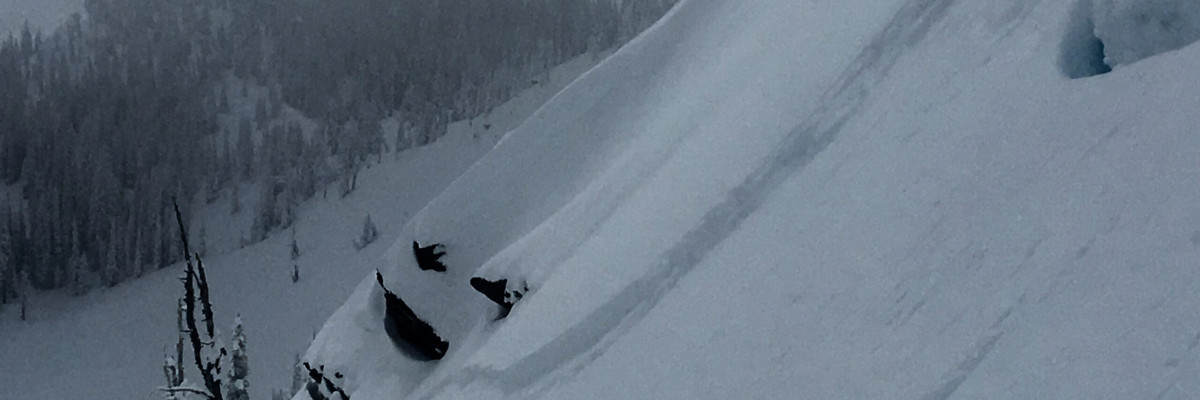This is Logan King with the end of the season update for the West Central Montana Avalanche Center. It doesn’t feel like spring in the mountain as copious snow has fallen over the past week but it’s not uncommon for large snow events this time of year. Whether we are ready for it or not spring is here and it necessitates a different set of skills and approach to recreating in the mountains.
Yesterday, while touring in the Rattlesnake we found full on mixed spring conditions with a mix of dry and wet avalanche problems. The name of the game is now adjusting to conditions as they rapidly change throughout the day. Keep in mind that spring can bring dry avalanches in the form of storm slabs and wind slabs or more challenging hazards like wet avalanches and cornice failures.
At upper elevations or in dry snow watch for wind slabs failing on interfaces of old snow or crusts. Also, stay aware of storm slabs following storms that bring snow to the region. Carefully assess the new snow for how well it is bonding to the old snow surface. New or wind drifted snow on crusts can result in easy failures that have a lot of pop that rapidly accelerate on slick crusts.
Long days, warm temperatures, and sunshine will result in the loss of strength within the snowpack. Wet avalanche problems are a function of timing. Get in and get out before the snow loses enough strength to fail. When snow becomes wet and starts to form roller balls move to a different aspect or call it a day. Wet slabs are challenging to predict but are best identified by lack of overnight freezes and free water in the snowpack. Remember that the harder or deeper the freeze overnight the more time you will have the following day before conditions turn. Wet slabs and glide avalanches are to be expected this time of year, wet slabs are a challenge to predict and glides are nearly impossible. With glide avalanches being so unpredictable its best to avoid them altogether if you see glide cracks don’t travel below them and find different terrain free of cracks in the snow. Finally, remember cornices will continue to lose strength as well. Give cornices plenty of space as they can break back farther than anticipated.
There is plenty of moisture still on tap for the foreseeable future and we will continue to post updates as the season draws to a close. We will continue to post public observations as we receive them.
All of us at the WCMAC would like to express our appreciation for all of the amazing support that we receive from the community. It has been a great season and we wouldn’t be able to do what we do without the outstanding support from all of you. Thanks again for another great season.
Ski and Ride Safe!
























